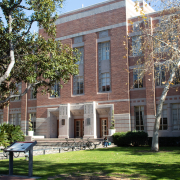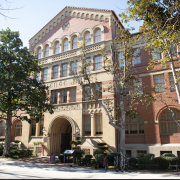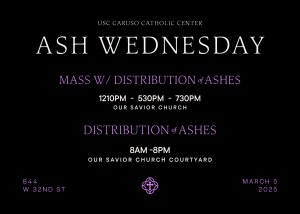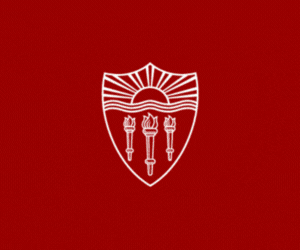SHREDDING THE MASTERS
The greatest guitarist you don’t know
Kirk Hammett hid his heritage for decades because of rock’s racism.

By REO
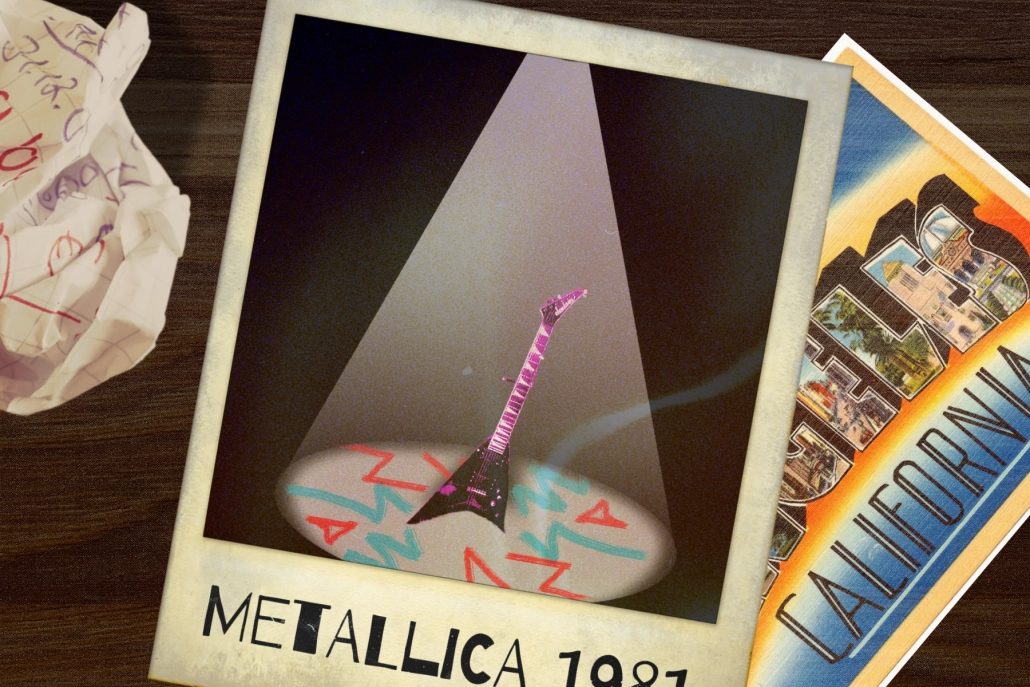
Reo / Daily Trojan
I owe Metallica an apology.
I’ve always pictured Metallica as another one of rock’s white-boy bands. Sure, I knew they were legends, but I also saw their success as a symptom of the industry’s diversity deficit. I thought their complexion, or lack thereof, cut a clear path forward for their rise to stardom.
I was wrong — for the most part.
Before researching this article, I used to think metal was synonymous with the Northeast and Midwest. The Southern Bible Belt would never put up with the demonic sound of heavy metal. The Western United States was home to hippies and beatniks, and Metallica would’ve probably triggered too many bad trips to gain a following.
The Northeast and Midwest seemed like the perfect places to build up metal. In the ’80s, big cities like Detroit were choking on their own exhaust. In New York’s forsaken Bowery, punk was already building a new type of rock.
In other words, there was a region that was failing commercially and finding newfound success artistically. It was filled to the brim with people who had sticks up their asses, and thus, a lot of repressed rage. This was the perfect location for a heavy metal band like Metallica to form. But instead, they decided to establish themselves in California.
When Metallica formed in 1981, it was a white-boy band. Founding vocalist James Hetfield and drummer Lars Ulrich were just two nobodies looking to jam in Los Angeles. There were no strings attached, and their “band” didn’t have a name for months.
A couple of years passed and the band picked up and dropped a handful of members. None were particularly interesting — other than Dave Mustaine, who was notably an asshole and would later form Megadeth.
Because Mustaine was such a raging douchebag, the band booted him before their first album. That same day, Metallica pulled in a replacement. With Mustaine’s departure came the first true talent — apart from the founding members — to enter the assembly line: Kirk Hammett.
Finally, Metallica became more than a white-boy band.
Hammett grew up in San Francisco, and his mother was Filipina. It was pretty rare to see an Asian American leading the rock scene, but Hammett had all the makings from an early age. Through his brother, Hammett gained an appreciation for the classics, like Led Zeppelin and Jimi Hendrix. Hammett also developed an early taste for horror, which lined up well with Metallica’s preexisting interests, as seen in songs like “The Call of Ktulu.”
Those interests, and practicing on guitar since the age of 15, eventually led Hammett to Metallica. Two decades later, he was in Rolling Stone’s “The 250 Greatest Guitarists of All Time,” and a handful of years after that, he and the rest of Metallica were inducted into the Rock & Roll Hall of Fame.
That is to say, he achieved everything a legend should have. And with some of the most recognizable solos in metal’s history — in rock’s history, even — the recognition was well-deserved. So, given all the accolades and mythic riffs, I have to ask myself: Why did I picture Metallica as a white-boy band?
The short and simple answer is that I’m uneducated. Metallica makes cool music; that’s as much as I needed to know. Of course, it makes it extra cool to know that one of their main players beat the odds and is now one of the most popular Asian American artists in rock. But I didn’t know that, and one might argue that was intentional.
Frankly, if Hammett had forefronted his heritage, he may have lost out on the same level of success that he received. We saw it with Prince, and we saw it with Joan Jett. Artists who strayed outside of the white-guy status quo were regularly ridiculed and underappreciated.
Prince was pelted with trash, and Joan Jett — like the other subjects of this column — had to wait years upon years to get her flowers. So, it makes sense that Hammett might not push his heritage into the limelight, lest he be overlooked.
I’ll admit: Part of me felt like a fraud writing this column. I’m not part of a community that’s been overlooked in rock history; I’m just another white guy giving his admittedly straightforward opinion on a problem that I haven’t personally experienced.
It’s true that Hammett had other interests he probably wanted to talk about more than his blood — like horror and writing riffs. It’s also true that in 61 years of life and nearly four decades of fame, the deepest Hammett has gone into his Filipino heritage is: “I’m a mestizo, which means I’m part Filipino,” in an interview with Time Out. The lack of attention given to such a significant detail is jarring, to say the least.
And we can blame it all on rock’s racist white boys club. That club continuously tricks people who don’t obsessively research every band they listen to into thinking that white-boy bands are all there is to rock ’n’ roll.
But they’re not. Beyond “The Masters,” there are legends. And I hope this column has, in its limited capacity, helped showcase that.
Reo is a sophomore writing about the overrepresentation of white guys in rock in his column, “Shredding the Masters,” which runs every other Thursday. He is also an associate managing editor at the Daily Trojan.
DONATION PLUG – PLEASE DO NOT TOUCH
Thank you for reading the Daily Trojan.
We are the only independent newspaper here at USC, run at every level by students. That means we aren’t tied down by any other interests but those of readers like you: the students, faculty, staff and South Central residents that together make up the USC community.
Independence is a double-edged sword: We have a unique lens into the University’s actions and policies, and can hold powerful figures accountable when others cannot. But that also means our budget is severely limited. We’re already spread thin as we compensate the writers, photographers, artists, designers and editors whose incredible work you see in our daily paper; as we work to revamp and expand our digital presence, we now have additional staff making podcasts, videos, webpages, our first ever magazine and social media content, who are at risk of being unable to receive the support they deserve.
We are therefore indebted to readers like you, who, by supporting us, help keep our paper daily (we are the only remaining college paper on the West Coast that prints every single weekday), independent, free and widely accessible.
Please consider supporting us. Even $1 goes a long way in supporting our work; if you are able, you can also support us with monthly, or even annual, donations. Thank you.

